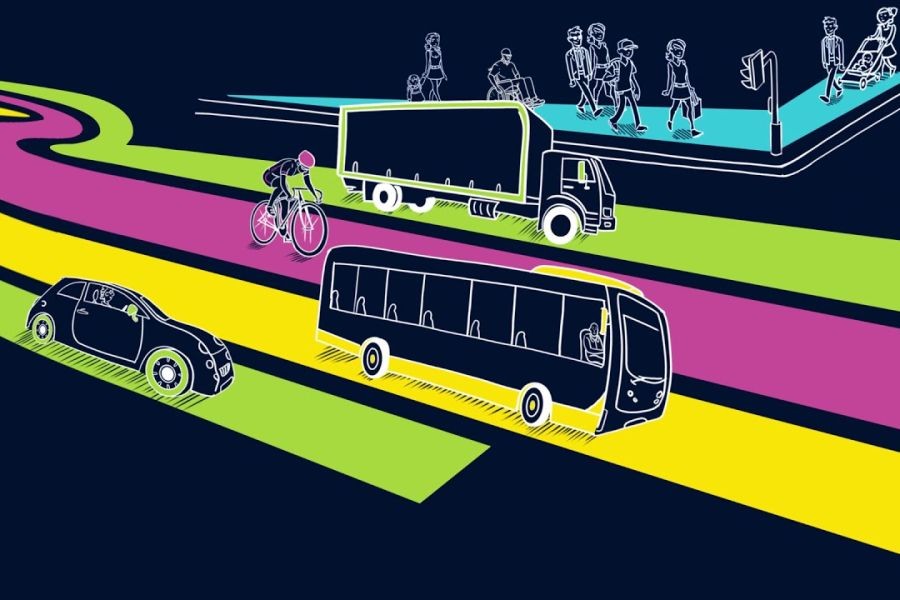In the vibrant landscape of New Zealand's urban development, public transport funding plays a pivotal role in shaping the future of cities, influencing property development, and impacting economic growth. However, as urban populations swell and infrastructure needs expand, there's growing concern that the funding mechanisms for public transport are falling short. This article explores the intricacies of public transport funding in New Zealand, the challenges it faces, and its implications for the property development sector.
Understanding New Zealand’s Public Transport Funding Model
Public transport in New Zealand is primarily funded through a combination of government grants, local council contributions, and fares paid by commuters. According to the Ministry of Transport, as of 2023, the government allocated approximately NZD 1.2 billion annually towards public transport, with significant portions earmarked for Auckland and Wellington, the country's largest urban centers.
The Funding Shortfall: A Closer Look
Despite these investments, a 2022 report by the New Zealand Infrastructure Commission indicated that public transport systems in major cities are operating at 85% of the capacity required to meet current demand. This shortfall is driven by several factors:
- Population Growth: New Zealand's population, projected by Stats NZ to reach 6 million by 2030, is outpacing the growth of transport infrastructure.
- Rising Costs: Construction and operational costs have surged, with a 20% increase in the cost of materials and labor since 2020, according to the Reserve Bank of New Zealand.
- Environmental Initiatives: Transitioning to more sustainable transport options, such as electric buses, necessitates significant upfront investment.
Case Study: Auckland’s Public Transport Challenges
Auckland, home to over 1.6 million people, serves as a microcosm of the broader issues facing New Zealand’s public transport sector. The Auckland Transport Alignment Project (ATAP) aimed to improve the city's infrastructure, yet a 2023 assessment revealed that only 60% of its targets had been met due to funding constraints.
Problem: Auckland faced severe congestion issues, with commute times increasing by 30% over the past decade.
Action: The city implemented the City Rail Link (CRL) project, a major initiative to enhance rail capacity.
Result: While the CRL is expected to boost capacity by 50%, funding delays have pushed its completion to 2026, exacerbating current congestion issues.
Takeaway: Reliable funding and timely execution are crucial for the success of large-scale transport projects.
Pros & Cons of Current Funding Strategies
Understanding the advantages and limitations of New Zealand's current public transport funding strategies is essential for devising effective solutions.
Pros
- Government Support: Consistent government funding has enabled the maintenance and expansion of essential services.
- Environmental Benefits: Investments in sustainable transport options align with New Zealand’s commitment to reducing carbon emissions.
- Economic Growth: Improved public transport infrastructure can enhance property values, boost local economies, and create jobs.
Cons
- Funding Gaps: Current funding levels are insufficient to meet the demands of rapidly growing urban populations.
- Dependency on Government Grants: Heavy reliance on government funding creates vulnerability to policy shifts and budget cuts.
- Delayed Projects: Funding uncertainties lead to project delays, which exacerbate existing transport issues.
Common Myths & Mistakes in Public Transport Funding
Several misconceptions persist about public transport funding in New Zealand:
- Myth: "Increased fares can cover the funding gap." Reality: According to a 2023 report by the NZ Transport Agency, fare increases alone cannot bridge the funding shortfall without deterring ridership, which could lead to a decline in revenue.
- Myth: "Private investment is the solution to all funding issues." Reality: While public-private partnerships can alleviate some financial burdens, they often come with complex negotiations and expectations that may not align with public service goals.
- Myth: "Urban sprawl reduces the need for public transport." Reality: A study by the University of Auckland found that urban sprawl increases the demand for public transport, as more residents rely on it for commuting to central business districts.
Innovative Solutions and Future Directions
To address the funding challenges, New Zealand can explore several innovative approaches:
- Value Capture Financing: This involves capturing the increase in property values resulting from improved transport infrastructure to fund future projects. For instance, a Deloitte report suggests that a 10% increase in property taxes in areas benefiting from new transport links could generate significant revenue.
- Congestion Pricing: Implementing congestion charges in busy urban centers can reduce traffic and generate funds for public transport. A successful example is London's Congestion Charge, which reduced traffic by 30% and raised funds for public transport improvements.
- Technology Integration: Leveraging data analytics can optimize route planning and improve efficiency, reducing operational costs.
Future Trends and Predictions
Looking ahead, several trends are likely to shape the future of public transport funding in New Zealand:
- Increased Government Investment: By 2028, government spending on public transport is projected to increase by 25% to accommodate growing urban populations (source: MBIE).
- Technological Advancements: The integration of AI and IoT technologies will enable more efficient management of transport systems and better resource allocation.
- Sustainable Transport Initiatives: As part of its commitment to carbon neutrality, New Zealand aims to electrify 100% of its public bus fleet by 2035, reducing emissions and operational costs.
Conclusion: Navigating the Path Forward
New Zealand's public transport system is at a critical juncture. While funding challenges persist, innovative solutions and increased investment can pave the way for a more efficient, sustainable, and reliable transport network. For property developers, understanding these dynamics is crucial, as transport infrastructure significantly impacts property values and urban growth.
As New Zealand continues to navigate these challenges, collaboration between government, private sectors, and communities will be vital in creating a transport system that meets the needs of its growing population. By staying informed and proactive, property developers can strategically position themselves to benefit from these changes.
What’s your take on New Zealand’s public transport funding challenges? Share your insights below!
People Also Ask (FAQ)
- How does public transport funding impact property values in New Zealand?Improved public transport infrastructure often increases property values by enhancing accessibility and reducing commute times, making areas more attractive to buyers and investors.
- What are the biggest misconceptions about New Zealand's public transport funding?A common myth is that fare increases alone can cover funding gaps, but research shows this approach can deter ridership, reducing overall revenue.
- What future changes could affect public transport in New Zealand?By 2028, increased government spending and the adoption of AI technologies are expected to enhance efficiency and sustainability in public transport systems.
Related Search Queries
- New Zealand public transport funding challenges
- Impact of transport infrastructure on property development
- Sustainable transport initiatives in New Zealand
- Public-private partnerships in NZ transport systems
- Future trends in New Zealand urban transport


























rzgkurtis95906
8 months ago